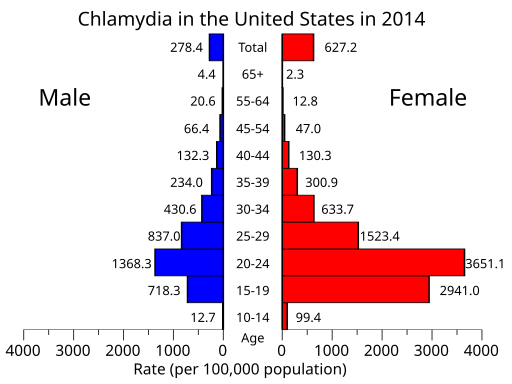Sexually Transmitted Diseases (STDs), which are also known as Sexually Transmitted Infections (STIs) and Venereal Diseases (VD), are part of the same family of diseases or infections that develop from sexual contact between two individuals.
About Sexually Transmitted Diseases
The activity can vary from vaginal intercourse to oral and anal sexual interaction. In addition, there are some sexually transmitted infections that may spread by way of unsterilized or unsanitary injections commonly used by drug addicted individuals. STDs may also be carried from the mother to her newborn during the process of childbirth, and breastfeeding can also result in the transmission as well as some blood transfusions.
Moreover, sexually transmitted diseases rank among the most infectious ailments known in the United States today. In fact, The Center for Disease Control estimates that a staggering 20 million new STD cases emerge on an annual basis in America. Half of these transpire in youngsters aged between 15 and 24. That number gives us a strong indication that suggested precautions are not taken and that those affected may not act with heed.
There are more statistics which delineate a damning indictment of sexually transmitted diseases in the country. According to the CDC, every other sexually active person is likely to contract some type of STD by the time they are 25 years old.
Unfortunately, these numbers are only scratching the surface of a predicament that has swept the nation. While young people represent nearly half of all sexually transmitted diseases, a concern for specialists and professionals is that recent surveys have shown that only 12% of individuals with STDs were actually tested. Essentially, that means that most individuals with such infections ignore medical attention. Logic would suggest that in some cases, their condition may worsen.
Last but not least, the health care industry in the United States is burdened considerably by the prevalence of sexually transmitted diseases. The total cost of STDs in America each year is approximately a whopping 16 billion dollars!
Common Causes of Sexually Transmitted Diseases
What causes the infection depends on the disease. However, the most frequent reasons are generally the same. The most common determinants are viruses, bacteria, and parasites. For each of the aforementioned categories, there are several sexually transmitted diseases that occur due to the presence of these microorganisms.
Types of Sexually Transmitted Diseases
Chlamydia
Chlamydia is one of the most common.. It is caused by a bacteria known as Chlamydia trachomatis, a bacteria that affects only humans and can affect both genders. While men contract chlamydia in their urethra, rectum or throat, women may get infected in their cervix, rectum, and throat.
Symptoms of chlamydia for men include a white and water like discharge from their genitals, which must not be confused with sperm. They may feel excruciating pain when they urinate, and their testicles may have cause for concern since most men who are chlamydia patients tend to have discomfort there.
Women may experience a notable augmentation in the excretion from the vaginal cavity, which is caused by an inflamed womb i.e. cervix. Additionally, they may also feel a painful sensation when they urinate and the same applies when they participate in sexual intercourse. Other red flags include aches in their lower abdominal area, specifically during sex and excessive bleeding during their periods.
In 2015, The Center for Disease Control stated that chlamydia ranked among the most reported STDs in the country, along with gonorrhea and syphilis (which we will discuss below). There were nearly 1.5 million cases of chlamydia, which was the highest number ever recorded by health care agencies across the United States.
Gonorrhea
Another popular sexually transmitted disease is Gonorrhea. It is a disconcerting STI since it can lead to infertility in both men and women. Fortunately, there is adequate treatment and preventative measures for this affliction, although scientists have recently discovered that a new strain of the ailment has emerged which has proven resistant to all antibiotics utilized by doctors.
Gonorrhea is also borne by a bacteria called Neisseria gonorrhoeae, which can infect the genital tract, mouth or anus. The disease can be contracted through vaginal, oral and anal sexual activity with a partner who is infected. Also, a pregnant woman may pass the condition onto their child during birth.

Syphilis
Another disease caused by bacteria, more specifically the Treponema pallidum, syphilis is spread by sexual contact with an infected person who has the syphilis lesion. When an individual comes into contact with open sores during sexual intercourse, the illness is disseminated from the affected person to their partner.
Syphilis affects the genital area, lips, and anus of both genders. The incubation period once the disease is transmitted lasts up to 90 days (3 months) with the average time being three weeks. That is when symptoms begin to manifest themselves. While some patients exhibit no signs of the ailment, others may have mild signals. Perhaps the most disconcerting cases of syphilis are those where the warning signs dissipate gradually but the bacteria is still present inside the individual’s body. In this instance, the presence of germs can cause issues at a later stage.
If left untreated, syphilis can even incite damage to the brain, nervous system and blood infections. There have also been unfortunate cases where syphilis has been fatal as well. Syphilis is a prevalent disease in the United States. For instance, in 2015, the rates of syphilis in both sexes showed considerable augmentation in every region of the country.
Small and largely innocuous sores identify initial stages of syphilis. These sores may induce an inflammation in the lymph nodes. If patients do not seek immediate medical attention, a skin rash may develop, usually on their hands and feet.
(Genital) Herpes
Herpes is a sexually transmitted disease that is caused by a virus called the herpes simplex virus (HSV). Genital herpes is a frequent STD that affects a multitude of people. An unsettling fact about herpes is that a high number of affected individuals are not aware that they have the disease at all.
There is no discernible cure for herpes but scientists have devised a treatment that can abate the symptoms of herpes and also greatly diminish the chances of spreading the ailment on to others if the individual is sexually active.
There are two main forms of herpes. One is called the HSV 1, which causes cold sores around the mouth and lips of the affected person. The other is known as HSV 2 and also causes cold sores around the genitals and rectum of patients, which is why it is aptly called genital herpes. The affected areas are used to distinguish between type 1 and type 2 herpes.
Herpes is known to create sores in the genital and rectal area, buttocks, and thighs of those who contract the disease. It may be spread by engaging in vaginal, oral, and anal sexual activity with an infected person. Additionally, the virus is capable of distribution even if sores are not apparent, and akin to other sexually transmitted diseases, a mother may infect their children during childbirth.
If you feel you have a sexually transmitted disease, contact your medical professional immediately. If you feel you would like to learn more about STDs or have questions, you can contact the Planned Parenthood U.S. National Sexual Health Hotline at 1-800-230-PLAN (7526).
